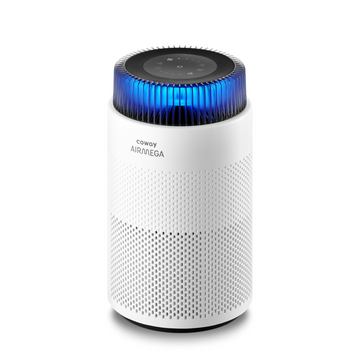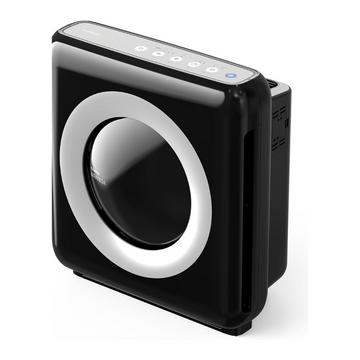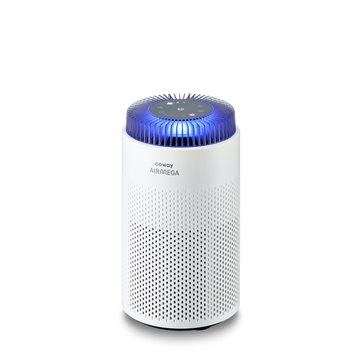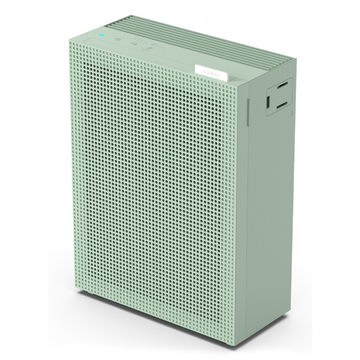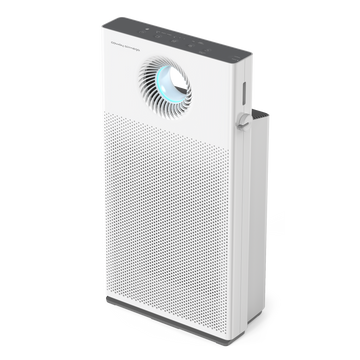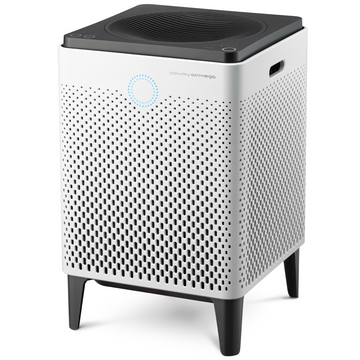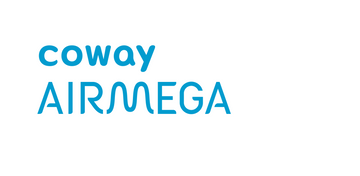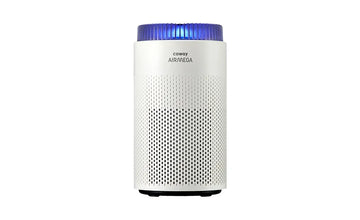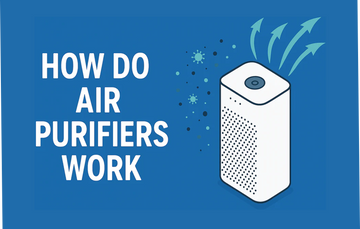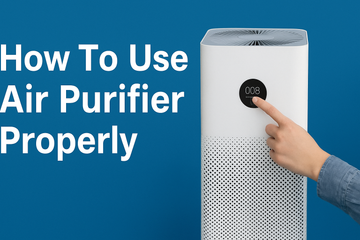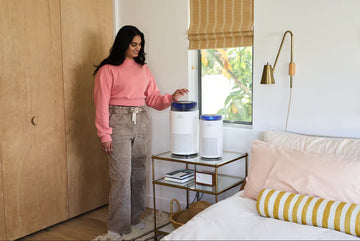Air purifiers have become essential household appliances, especially as we become more conscious of indoor air quality. But how do air purifiers work exactly? Understanding the science behind these devices helps you make informed decisions about protecting your family's health and choosing the right air cleaning solution for your home.
Key Takeaways
-
Air purifiers use fans to draw air through filters, trapping contaminants before recirculating cleaner air
-
HEPA filters remove 99.97% of particles 0.3 microns or larger, including dust, pollen, and bacteria
-
Multiple filtration stages target different pollutants for comprehensive air cleaning
-
Mechanical filters use dense fiber webs to physically trap particles
-
Proper sizing and maintenance are crucial for optimal performance
-
Explore Coway's advanced air purification systems for effective indoor air quality solutions
What Does An Air Purifier Do?
The basic functions of an air purifier centre around removing harmful particles and contaminants from indoor air to create a healthier living environment. At its core, an air purifier's primary function is to capture and filter airborne pollutants including dust, pollen, pet dander, smoke particles, and microscopic contaminants that can trigger allergies or respiratory issues.

The device accomplishes this through a systematic process: it draws contaminated air through intake vents using an internal fan, passes the air through multiple filtration stages (typically including pre-filters,
HEPA filters, and activated carbon filters), and then recirculates the cleaned air back into the room. Beyond particle removal, air purifiers also serve the crucial function of odour elimination through activated carbon filtration, which absorbs volatile organic compounds (VOCs), cooking smells, and chemical pollutants.
Additionally, many modern air purifiers include pathogen neutralisation capabilities through UV-C light technology or advanced HEPA filtration that can capture bacteria and viruses as small as 0.1 microns. The continuous operation of these functions helps maintain optimal indoor air quality by performing multiple air exchanges per hour, ensuring that the air you breathe is consistently filtered and refreshed throughout your living space.
What are the Technologies Used in Air Filtration?
Air filtration employs several distinct techniques, each targeting different types of airborne contaminants through various mechanisms. There are currently 5 different air purification technologies used in air purifiers: HEPA/mechanical filtration, activated carbon, UV light, ionization, and ozone generation. Understanding these techniques helps you choose the most effective air purification system for your specific needs.
1. HEPA (High Efficiency Particulate Air) - Mechanical Filtration

HEPA (High Efficiency Particulate Air) filtration represents the gold standard in mechanical air filtration. HEPA filtration is a type of mechanical filtration that meets a high standard of the particulates it removes from the air. In order for a filter to be classified as HEPA it must be tested and confirmed to remove at least 99.97% of particles down to 0.3 microns.
How Mechanical Filtration Works:
Mechanical filters, both HEPA and non-HEPA, are made of fabric-like materials and operate by removing particulates from the air by simply catching them in the fibers. The filtration process relies on three key mechanisms:
-
Impaction: Larger particles collide directly with filter fibres
-
Interception: Medium-sized particles following airstreams get caught when they come within one radius of a fibre
-
Diffusion: Ultra-fine particles move erratically and eventually contact fibres
Effectiveness Range:
Depending on the efficiency rating, mechanical filters can remove particles such as pollen, dust, mold spores, fiberglass dust, asbestos, smoke, radioactive fallout, pet hair and dander, dust mite allergens, bacteria, and even viruses.
2. Activated Carbon Filtration

Activated Carbon Filtration
Activated carbon filtration specifically targets gaseous pollutants and odours that mechanical filters cannot capture. Activated Carbon is a critical component of effective air purification, catching harmful chemicals such as Formaldehyde and Volatile Organic Compounds (VOC). The Carbon filter in Sans also captures odors, smoke and other gasses, such as radon.
Primary Functions:
-
Absorbing chemical vapours and VOCs
-
Eliminating household odours from cooking, pets, and cleaning products
-
Neutralising smoke and gas molecules
-
Removing formaldehyde and other toxic compounds
Substances like formaldehyde, which can linger in furniture, carpeting, and other porous surfaces, are no match for high-quality activated carbon filtration. However, activated carbon can't solve all indoor air quality problems on its own. While these filters are great at keeping a number of harmful substances at bay, they're less effective at eliminating standard allergens and other airborne particles.
3. UV-C Light Disinfection

UV-C Light
Ultraviolet-C (UV-C) light disinfection targets pathogens through a completely different approach than physical filtration. This purifier uses a UV light that has electromagnetic radiation that will destroy bacteria and other pathogens by breaking the molecular bonds in their DNA.
Pathogen Neutralisation:
UV-C light can disable germs, mold, mildew, bacteria, and viruses by stopping them from reproducing. This technique is particularly effective because UV light sources, or UV lamps, emit ultraviolet C (UV-C) light at wavelengths which is the most effective for affecting airborne mold, bacteria viruses, spores, and other pathogens.
Important Limitations:
While UV-C light is highly effective when it comes to killing harmful microorganisms, it doesn't eliminate airborne particles altogether. In fact, some microorganisms can avoid the killing blow of UV light by hiding behind other particulates.
Safety Considerations:
Some ultraviolet filters generate ozone to kill bacteria and sometimes may not be properly dispersed, posing a serious health concern. If purchasing an Ultraviolet light air purifier, make sure to find a system that does not produce ozone.
4. Ionisation Technology

Air ionisation works by electrically charging air molecules to remove particles from the breathing space. Air ionizers or electrostatic air cleaners use electricity to electrically charge molecules in the air. These charged particles, ions, collect particles in the air and eventually find a surface in the room to stick to.
Two Main Types:
Air Ionizers:
Air Ionizers send negatively charged ions into the room's surrounding air, causing contaminants to fall and settle onto nearby surfaces (floors, tables, carpets, etc.), where you can then wipe them up.
Electrostatic Precipitators:
Electrostatic Precipitators have positively and negatively charged plates. A fan draws the pollutants through the plates, which collect the particles so they can be cleaned off.
Significant Limitations:
Basically ionizers take the pollutants out of the air and put them on your walls and furniture. Of course when the charge neutralizes the pollutants are released back into the air. Additionally, the main health concern related to ionic air purifiers is the fact that they produce ozone as a byproduct. The EPA classifies ozone as a toxic gas that causes lung damage, triggers asthma attacks, and can even lead to increased risk of death.
5. Multi-Stage Combined Systems
Multi-Stage Combined Systems
Modern air purification systems often combine multiple techniques for comprehensive air cleaning. Advanced systems kill more than 99.9% of air-borne microbes by combining the top four technologies: UVC lamp disinfection, activated carbon filter, HEPA filter and Bi-Polar ionization into one product. This combination ensures that the air sterilizer can kill 99.9% of microbes once the air is released.
Optimal Integration:
The best use of UV technology involves combining it with HEPA and activated carbon filtration as the initial stages. Once the air has been filtered via these means, UV light can do what it does best and kill the most pernicious microorganisms caught in the system.
Filter Rating Systems
MERV Ratings:
In the United States, it's common to see filters rated on the MERV scale, which is derived from the ASHRAE 52.2 test standard. The higher the MERV rating, the smaller the particles the filter removes. MERV 8 filters are sufficient for capturing pollen, cement dust, and mold spores, whereas MERV 16 filters are used for capturing tiny particles such as bacteria and smoke and can be used for keeping hospitals and surgery rooms clean.
Recommended Technologies:
Since UV lights, ionizers, and ozone generators all are not very effective at cleaning the air and pose health risks to humans, leading manufacturers design air purifiers using only the two methods that are proven to be the most effective at cleaning the air and 100% safe - HEPA filtration and activated carbon.
Understanding these air filtration techniques helps you make informed decisions about which technology best addresses your specific indoor air quality concerns while maintaining safety and effectiveness standards.
How Do Air Purifiers Work?
Air purifiers are portable devices that combine an internal filter and fan to pull in unwanted particles from the air in a specific room, with purified air then circulated back into the room. The fundamental process involves three key steps:

Step 1: Air Intake
The internal fan creates airflow that draws contaminated air into the unit through intake vents.
Step 2: Filtration Process
The motor and fan circulate air while the filter removes pollutants as air passes through the machine. Multiple filter layers target different types of contaminants.
Step 3: Clean Air Distribution
The filtration process repeats several times an hour, continually boosting indoor air quality by releasing purified air back into your living space.
What Do Air Filters Do In A House?

Air Filters In a house
Air filters in a house serve as the primary defence system against indoor air pollution, working continuously to remove harmful particles, allergens, and contaminants that can compromise your family's health and comfort.
Unlike portable air purifiers that clean air in individual rooms, whole-house air filters integrate directly with your HVAC system to provide comprehensive air cleaning throughout your entire home.
These filters perform multiple critical functions: they capture dust, pollen, pet dander, and microscopic particles before they can circulate through your ductwork and settle on furniture or be inhaled by occupants.
Additionally, house air filters protect your HVAC equipment by preventing debris buildup that can reduce system efficiency, increase energy costs, and lead to costly repairs. Advanced whole-house filtration systems also eliminate odours, chemical pollutants, and volatile organic compounds (VOCs) through activated carbon technology, while some models include UV-C light sterilisation to neutralise bacteria, viruses, and mould spores throughout your home's air supply.
The filters work by forcing all air that enters your living spaces to pass through filtration media during the heating and cooling process, ensuring that every room receives consistently clean, filtered air.
Air Purifier Limitations

Surface Contaminants: Once allergens have settled to the ground or onto surfaces, you'll need a vacuum cleaner rather than relying on air purification alone.
Settled Particles: For an air purifier to pull out particles, you would have to stir them all up from the floor, soft furnishings and anywhere else, and they would accumulate again fairly quickly. Often, better ventilation is achieved by having a door or window open.
While air purifiers significantly improve indoor air quality, they work best as part of a comprehensive approach to creating a healthier home environment. The key is understanding their capabilities and using them appropriately.
The Science Behind Filter Efficiency
|
Filter Type |
Particle Size Removed |
Efficiency Rate |
Primary Function |
|
HEPA |
0.3+ microns |
99.97% |
Particles, allergens |
|
Activated Carbon |
Gas molecules |
Variable |
Odours, chemicals |
|
Pre-filter |
10+ microns |
80-90% |
Large particles |
|
UV-C |
N/A |
99%+ |
Pathogens |
For comprehensive air purification solutions that combine multiple technologies effectively, explore Coway's range of advanced air purifiers designed specifically for UK homes.
Why Indoor Air Quality Matters More Than Ever
The Environmental Protection Agency (EPA) has found that human exposure to air pollutants indoors may commonly be two to five times higher than outdoor levels of pollution. This makes understanding how air purifiers work increasingly important for maintaining a healthy home environment.

Health Benefits of Clean Indoor Air:
-
Reduced allergy and asthma symptoms
-
Better sleep quality
-
Lower risk of respiratory infections
-
Improved overall well-being
Frequently Asked Questions
How often should I run my air purifier?
For optimal results, run your air purifier continuously, especially during high-pollution periods or allergy seasons.
Can air purifiers remove cooking odours?
Yes, models with activated carbon filters effectively remove cooking odours and smoke particles.
Do air purifiers help with pet allergies?
HEPA filters can collect 99.97 percent of particles in the air, including pet dander, making them highly effective for pet allergy sufferers.
How long do HEPA filters last?
Mechanical filters need to be replaced every six to 12 months, depending on usage and air quality conditions.
Conclusion: Making Informed Air Purification Decisions
Understanding how air purifiers work empowers you to choose the right system for your specific needs. Whether you're dealing with allergies, pet dander, cooking odours, or general air quality concerns, the right air purifier with proper HEPA filtration and complementary technologies can significantly improve your indoor environment.
The key to success lies in selecting appropriately sized units, maintaining them properly, and using them as part of a comprehensive approach to indoor air quality management. With this knowledge, you can breathe easier knowing you're making informed decisions about your family's health and comfort.
For expert-engineered air purification solutions tailored to your specific needs, visit Coway's collection and discover how advanced filtration technology can transform your home's air quality.
